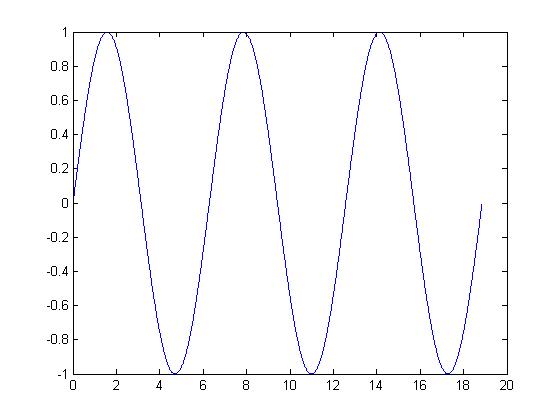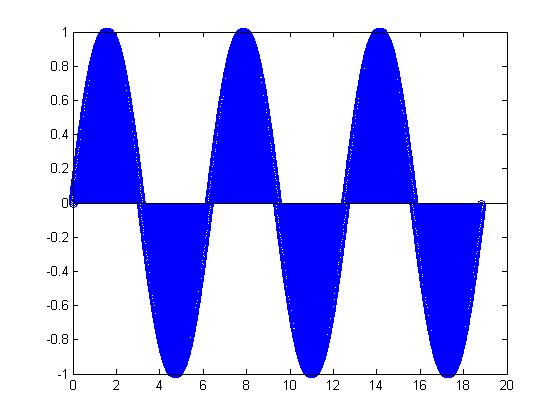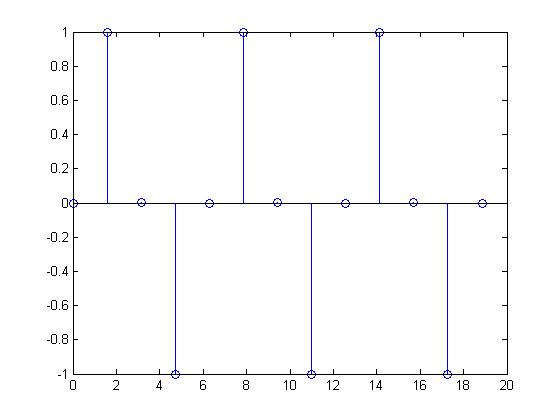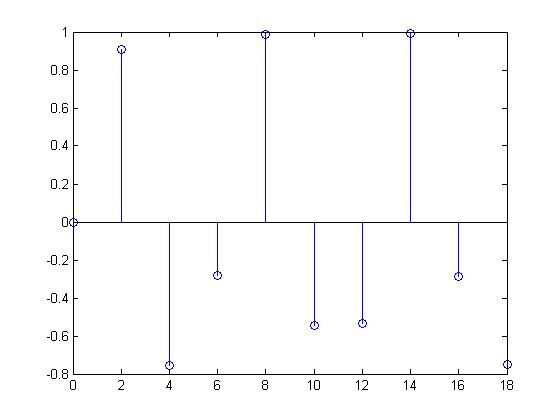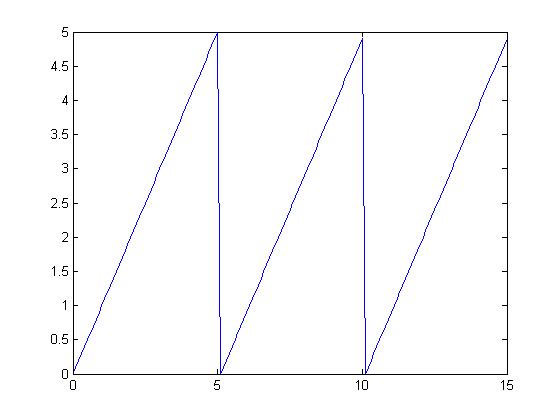(→2. Create a periodic signal by summing shifted copies of a non-periodic signal) |
(→2. Create a periodic signal by summing shifted copies of a non-periodic signal) |
||
| Line 40: | Line 40: | ||
>> t1 = 0:0.1:5; | >> t1 = 0:0.1:5; | ||
| + | |||
>> t2 = 5.001:0.1:10; | >> t2 = 5.001:0.1:10; | ||
| − | >> t3 = 10.001:0.1:15; | + | |
| + | >> t3 = 10.001:0.1:15; | ||
| + | |||
>> t = 0:0.1:15; | >> t = 0:0.1:15; | ||
| + | |||
>> y1 = (t1); | >> y1 = (t1); | ||
| + | |||
>> y2 = (t2 - 5); %Referred to Wei Jean's code because I was getting an error and I was not sure | >> y2 = (t2 - 5); %Referred to Wei Jean's code because I was getting an error and I was not sure | ||
| + | |||
>> y3 = (t3 - 10); %why I still needed to shift when the t1,t2, and t3 values were defined like they are. | >> y3 = (t3 - 10); %why I still needed to shift when the t1,t2, and t3 values were defined like they are. | ||
| + | |||
>> y_sum = [y1 y2 y3]; | >> y_sum = [y1 y2 y3]; | ||
| + | |||
>> plot(t,y_sum) | >> plot(t,y_sum) | ||
| + | |||
>> | >> | ||
[[Image:Awsaw_ECE301Fall2008mboutin.jpg]] | [[Image:Awsaw_ECE301Fall2008mboutin.jpg]] | ||
Revision as of 10:05, 11 September 2008
Contents
1. Creating two DT signals (one periodic and one non-periodic) from a periodic CT signal
Let $ x(t) = sin (2\pi t), $ which is a periodic CT signal
Periodic Signal
This discrete time signal was produced from a CT sine wave by sampling at a frequency of $ \frac{1}{\pi} $.
As can be seen from the graph, the values of x[n] are periodic because they repeat after every period of $ t = 2\pi $.
Therefore, $ x[n + 2\pi] = x[n] $
However, this still does not fulfill the requirement as $ N = 2\pi $ is not an integer. For the signal to become periodic, the CT waveform has to be modified to $ x(t) = sin(0.5\pi t) $ and sampled at a frequency of 1 Hz. Upon modification, $ x[n + 4] = x[n] $
$ x(t) = sin(0.5\pi t) $ sampled at 1 Hz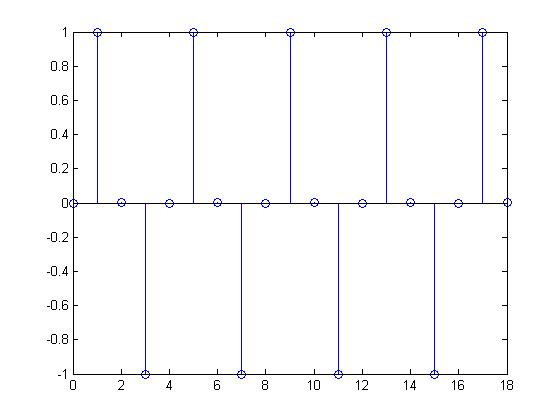
Non Periodic Signal
For this discrete time signal which was produced by sampling the same sine wave at a frequency of 0.5, the values of x[n] are non-periodic because the discrete time signal is scattered all over the place with no indication of a pattern. Therefore, $ x[n + k] \neq x[n] $
2. Create a periodic signal by summing shifted copies of a non-periodic signal
Using Cheng Chen's non periodic CT signal from HW1, y(t) = t.
MATLAB CODING
>> t1 = 0:0.1:5;
>> t2 = 5.001:0.1:10;
>> t3 = 10.001:0.1:15;
>> t = 0:0.1:15;
>> y1 = (t1);
>> y2 = (t2 - 5); %Referred to Wei Jean's code because I was getting an error and I was not sure
>> y3 = (t3 - 10); %why I still needed to shift when the t1,t2, and t3 values were defined like they are.
>> y_sum = [y1 y2 y3];
>> plot(t,y_sum)
>>

